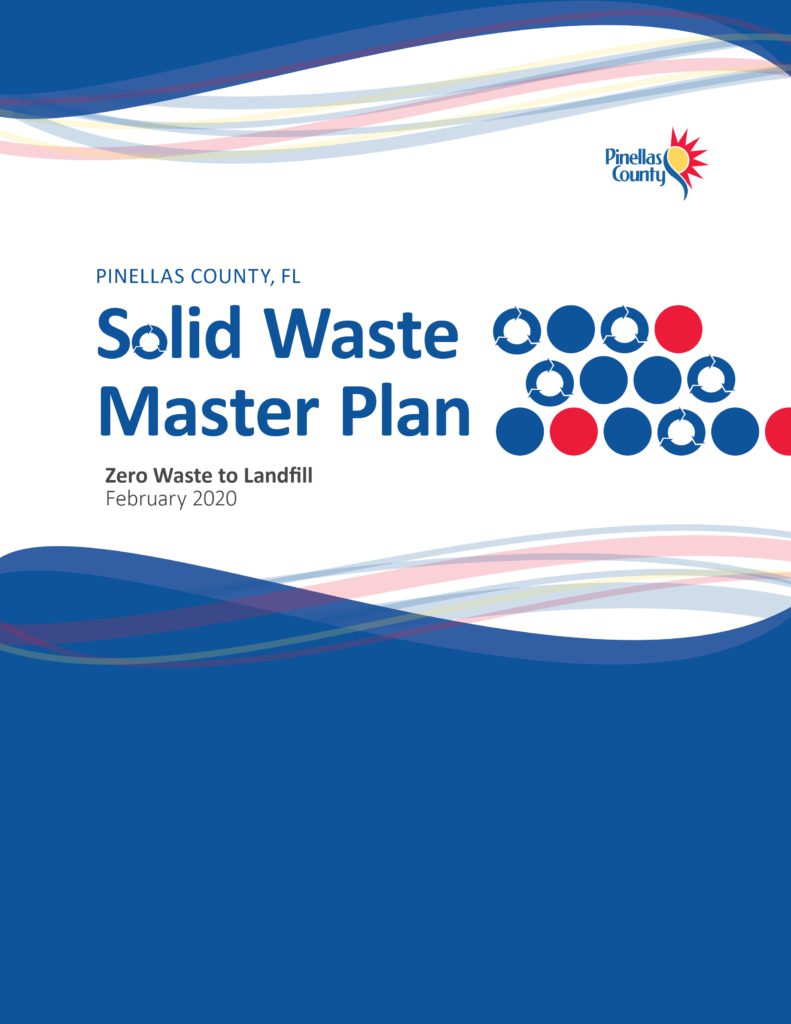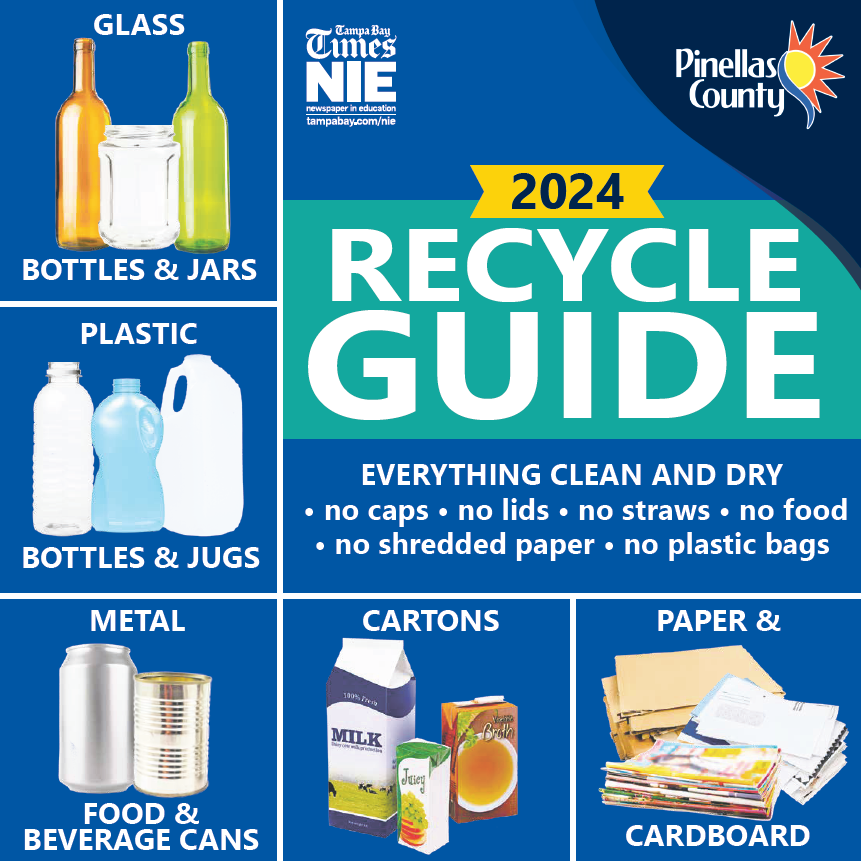A Year in Review: How Good is Pinellas County at Recycling?
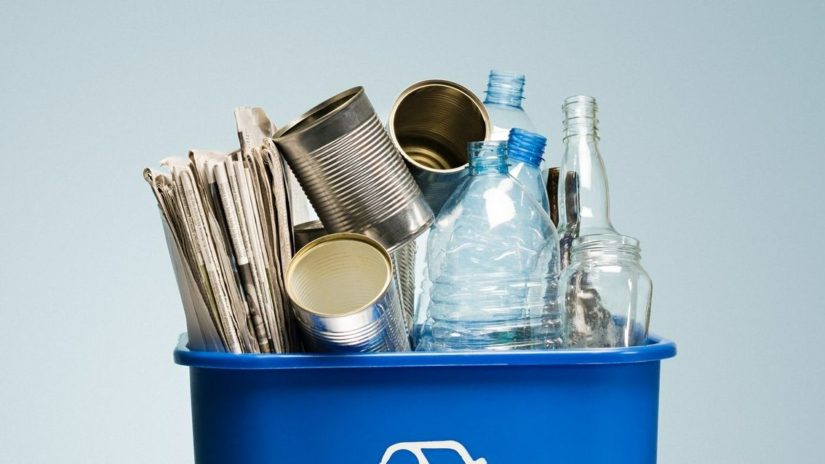
Over the past year, Pinellas County Solid Waste (PCSW) collected data and conducted various studies about garbage and recycling in Pinellas County. These studies tell us how we are progressing toward our vision of zero waste to landfill by 2050. Zero waste to landfill means no garbage will be sent to landfill because the waste was instead reused, recycled or burned at the Waste-to-Energy Facility. The study findings help the department make informed decisions, find ways to improve programs and reveal what residents and businesses need to know about garbage and recycling.
How Much We Recycled
What is the Solid Waste Management Report?
PCSW prepares the Solid Waste Management Report for the Florida Department of Environmental Protection (FDEP) every spring. This report calculates the County’s recycling rate for the previous calendar year. View the results of the 2023 Solid Waste Management Report on FDEP’s website.
Pinellas County’s Results
Pinellas County had the fourth-highest recycling rate in the state with a 70% overall recycling rate. This means that of all the waste produced in Pinellas County, including recyclables and garbage, 70% was recycled. The average overall recycling rate for the entire state was 49%, putting us well above average.
Here are the highlights:
- From 2022 to 2023, the recycling rate increased by about 3.8%.
- Pinellas County landfilled 15.9% less garbage in 2023 compared to 2022.
- Overall, Pinellas County created 4.5% less waste in 2023 than the year before.
What We Recycle & How Well We Follow Guidelines
What is the Recyclable Materials Composition Study?
This report provides an overview of the types and quantities of materials residents are placing in recycling bins. The study is conducted by taking samples of materials that were brought to recycling drop-off centers and placed in home and business recycling bins. Workers then sort, categorize and weigh these materials. Read the full 2024 recyclable materials composition study report online.
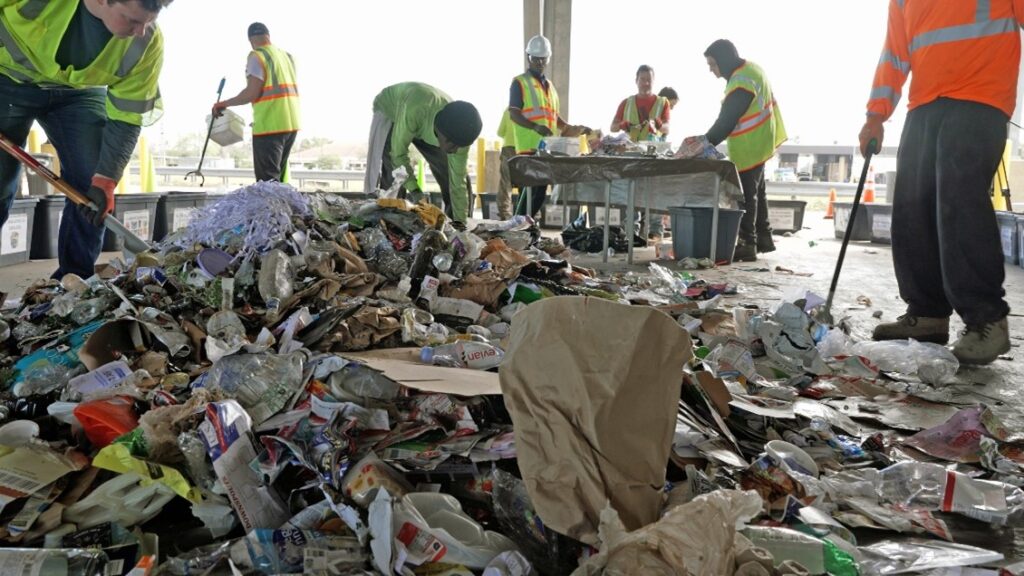
What’s in Recycling Bins in Pinellas County?
Contamination refers to any materials placed in your recycling bin that do not belong there.
Pinellas County’s overall contamination rate is 21.7%.
That means that for every five pounds of materials placed in recycling bins, one pound did not belong!
The average overall contamination rate for recycling in the state is 27%, which means Pinellas County is doing slightly better than the Florida average (according to a 2020 University of Florida study).
Top Contaminants
The study found that the items pictured below are the most common items placed in recycling bins that don’t belong there.
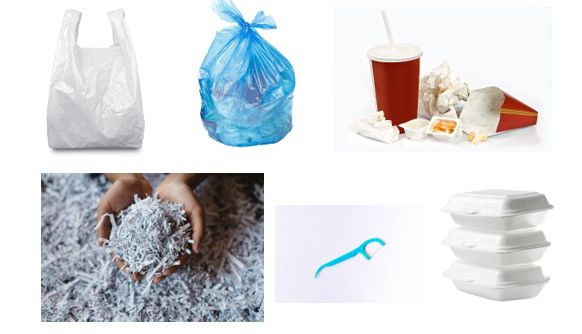
What We Know About Recycling & How We Participate
What is the Residential Recycling Awareness Survey?
This survey asks Pinellas County residents about their recycling behaviors and habits. It asks if, how, and why residents recycle, about the resources residents use and seek, and more. Read the full residential recycling awareness survey report online.
The Key Findings
Most Pinellas County residents have access to recycling at home and recycle their glass bottles and jars, metal food and beverage cans, plastic bottles and jugs, cartons, paper and cardboard. The survey showed that people who live in multi-family homes, such as apartment and condo buildings, have less access to recycling (69%) than people who live in single-family homes (96%). On the bright side, if you don’t have to have recycling collection services at home, you can join the other 32% of Pinellas County residents who use a free recycling drop-off center. View this map of recycling drop-off centers to find one close to you.
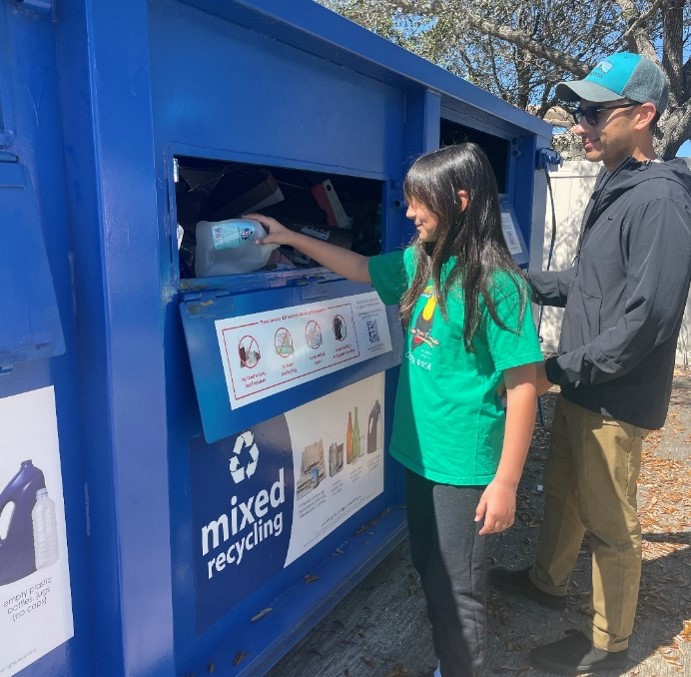
managed by Pinellas County.
In other good news, most of us are on the same page about why we recycle – to protect the earth. Learn more about why recycling is important.
Room for Improvement: Proper Battery Disposal
We don’t have to remind you that rechargeable batteries should never be placed in your garbage bin because, according to the Residential Recycling Awareness Study, 97% of residents already know this. However, you may not know that rechargeable batteries should also never be placed in your recycling bin. Learn how to properly dispose of batteries.
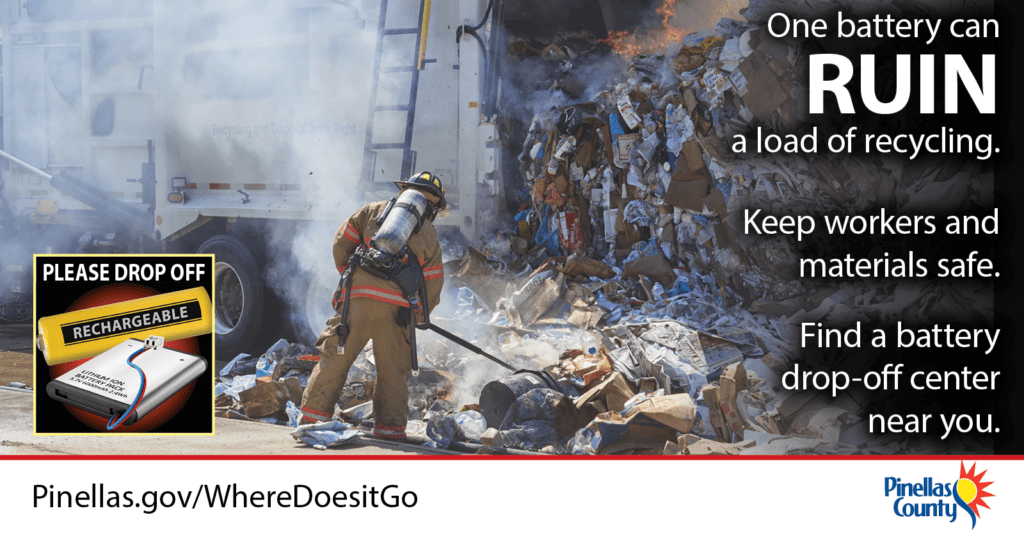
What is in Store for 2025?
In 2025, we plan to conduct a waste composition study to learn what is in our garbage. This will help us identify materials that could be recycled or reused instead of being thrown in the garbage. This will help us modify our outreach efforts.
We’ll be surveying business owners on their recycling habits. We alternate between conducting recycling awareness surveys of residents and businesses every other year.
We’ll keep you updated with the 2024 recycling rate once the data is certified by the state in July 2025.
Questions?
Reach out to us by emailing recycle@pinellas.gov.
